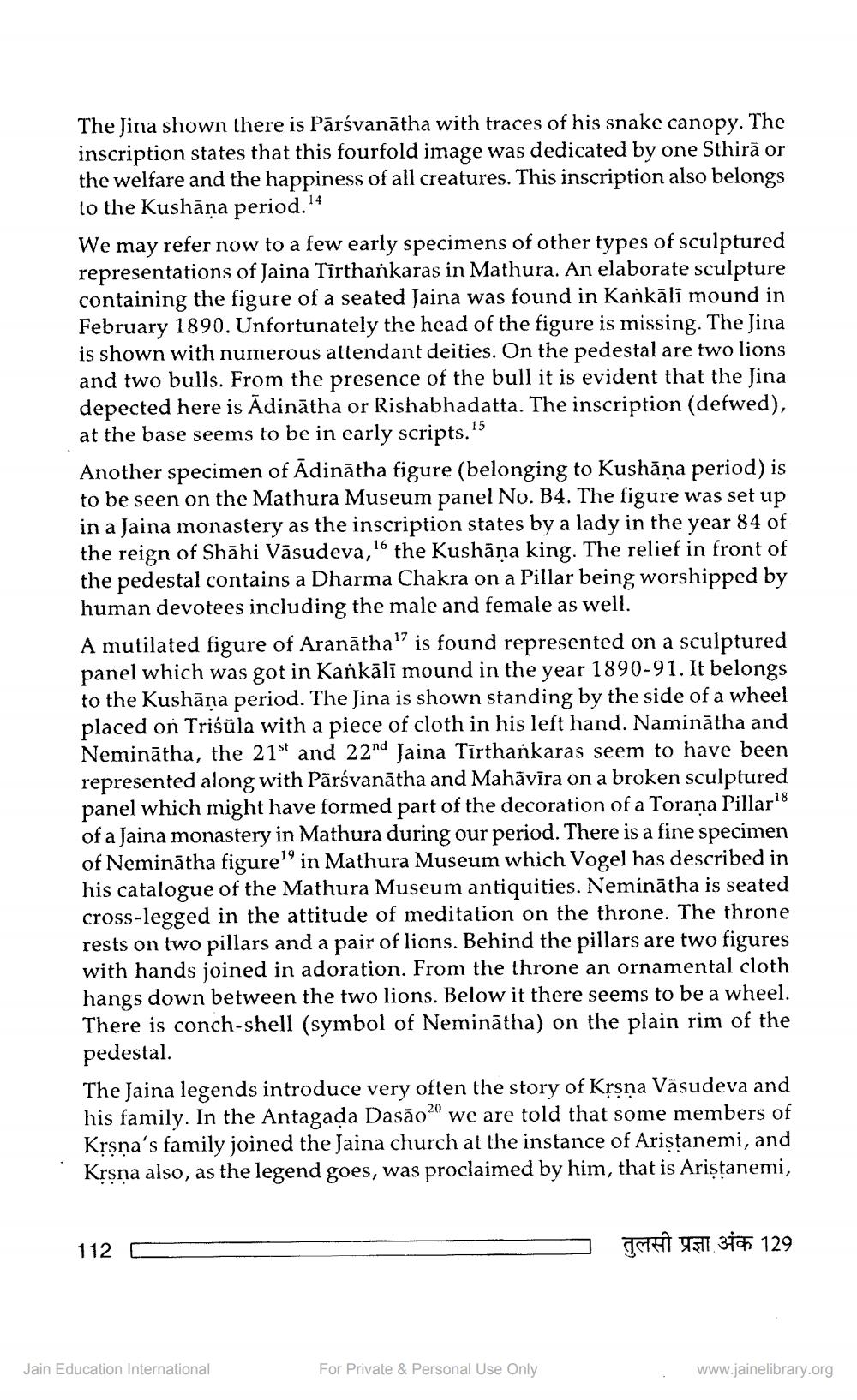________________
The Jina shown there is Pārsvanātha with traces of his snake canopy. The inscription states that this fourfold image was dedicated by one Sthiră or the welfare and the happiness of all creatures. This inscription also belongs to the Kushāna period.14 We may refer now to a few early specimens of other types of sculptured representations of Jaina Tīrthankaras in Mathura. An elaborate sculpture containing the figure of a seated Jaina was found in Kankāli mound in February 1890. Unfortunately the head of the figure is missing. The Jina is shown with numerous attendant deities. On the pedestal are two lions and two bulls. From the presence of the bull it is evident that the Jina depected here is Ādinātha or Rishabhadatta. The inscription (defwed), at the base seems to be in early scripts." Another specimen of Ādinātha figure (belonging to Kushāņa period) is to be seen on the Mathura Museum panel No. B4. The figure was set up in a Jaina monastery as the inscription states by a lady in the year 84 of the reign of Shāhi Vāsudeva, 16 the Kushāṇa king. The relief in front of the pedestal contains a Dharma Chakra on a Pillar being worshipped by human devotees including the male and female as well. A mutilated figure of Aranāthais found represented on a sculptured panel which was got in Kankāli mound in the year 1890-91. It belongs to the Kushāna period. The Jina is shown standing by the side of a wheel placed on Triśüla with a piece of cloth in his left hand. Naminātha and Neminātha, the 21st and 22nd Jaina Tīrthankaras seem to have been represented along with Pārsvanātha and Mahāvīra on a broken sculptured panel which might have formed part of the decoration of a Torana Pillar18 of a Jaina monastery in Mathura during our period. There is a fine specimen of Neminātha figure'' in Mathura Museum which Vogel has described in his catalogue of the Mathura Museum antiquities. Neminātha is seated cross-legged in the attitude of meditation on the throne. The throne rests on two pillars and a pair of lions. Behind the pillars are two figures with hands joined in adoration. From the throne an ornamental cloth hangs down between the two lions. Below it there seems to be a wheel. There is conch-shell (symbol of Neminātha) on the plain rim of the pedestal. The Jaina legends introduce very often the story of Krsna Vāsudeva and his family. In the Antagada Dasão20 we are told that some members of Krsna's family joined the Jaina church at the instance of Ariştanemi, and Krsna also, as the legend goes, was proclaimed by him, that is Aristanemi,
112 C
THE UFI 31 129
Jain Education International
For Private & Personal Use Only
www.jainelibrary.org




